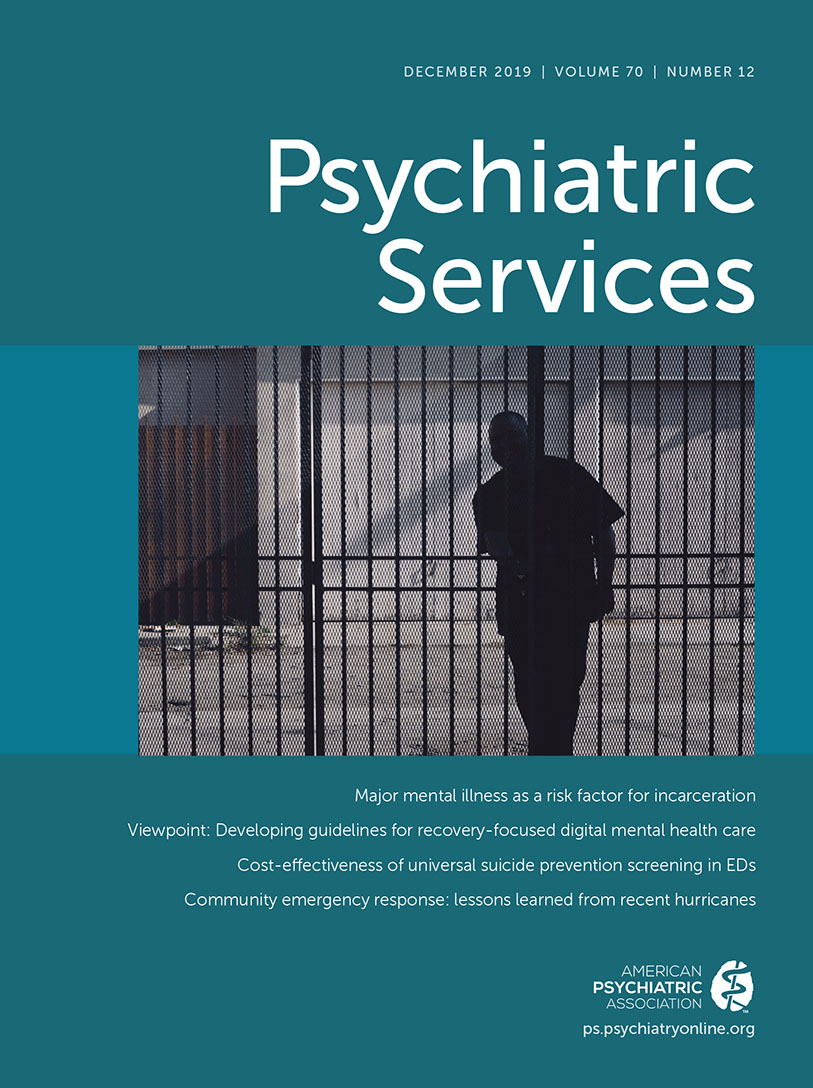Effects of Mental Health on the Costs of Care for Chronic Illnesses: In Reply
IN REPLY: Dr. Kathol and colleagues offer important feedback about our article. We recognize the limitations of the 12-item Short Form (SF-12) and describe these concerns in the limitations section of our article. Kathol et al. argue that the Physical and Mental Component Summary scores (PCS and MCS) “interact in unpredictable ways.” In theory, PCS and MCS are uncorrelated because they were derived through factor analysis, and we appreciate the reference to Hagell et al. (1), who offer different scoring options.
Kathol and colleagues suggest that we should have obtained mental diagnoses from patient medical records instead of MCS scores. Epidemiologic studies show that only a small proportion of people with mental health challenges see mental health providers and even fewer have a psychiatric diagnosis. The advantage of the population-based MCS measure is that it may provide a better representation of mental health functioning in the general population. However, we agree with Kathol and colleagues that our evaluation should be complemented by investigations that define the study population differently. Each approach has advantages and disadvantages, and studies using different methods may lead to a clearer understanding of the issues. The Milliman study (2), although impressive, does not offer a test of the synergistic effect of mental health comorbidity on the costs of caring for chronic diseases. That requires cost estimates for people with and without each chronic disease diagnosis in addition to those with and without psychiatric diagnoses.
Our article does not address the value of embedding mental health providers in primary care settings. We recognize that people with mental health conditions may use more services in the medical as opposed to the behavioral health system. That is why we chose total expenditures as the outcome. We examined the Panagioti et al. article (3) and agree that it provides persuasive evidence that collaborative care is valuable for people with and without a general medical diagnosis. But the authors did not consider costs, and we do not see how the article supports the assertion that collaborative care decreases “the total cost of care per patient, mainly for medical services.” To be clear, our results show a significant relationship between mental health problems and cost. We do not dispute the value of mental health care and embedded mental health services. Our focus was on a very specific issue—whether the combination of poor behavioral health and medical illness has synergistic effects on cost.
In summary, we appreciate the feedback from Kathol and colleagues and encourage replication of our work by using established diagnosis of mental health conditions instead of population-based scores from the SF-12. We recognize the value of collaborative care and encourage more systematic research on the costs and benefits of embedding mental health providers in primary care settings.
1 : Beware of the origin of numbers: standard scoring of the SF-12 and SF-36 summary measures distorts measurement and score interpretations. Res Nurs Health 2017; 40:378–386Crossref, Medline, Google Scholar
2 : Potential Economic Impact of Integrated Medical-Behavioral Healthcare: Milliman Report. Denver, Milliman, 2018Google Scholar
3 : Association between chronic physical conditions and the effectiveness of collaborative care for depression: an individual participant data meta-analysis. JAMA Psychiatry 2016; 73:978–989Crossref, Medline, Google Scholar



